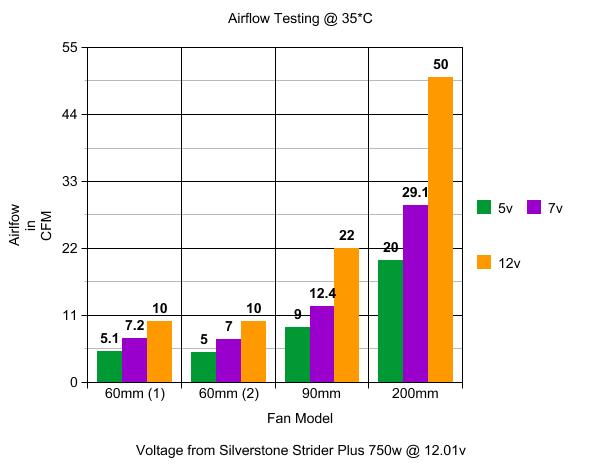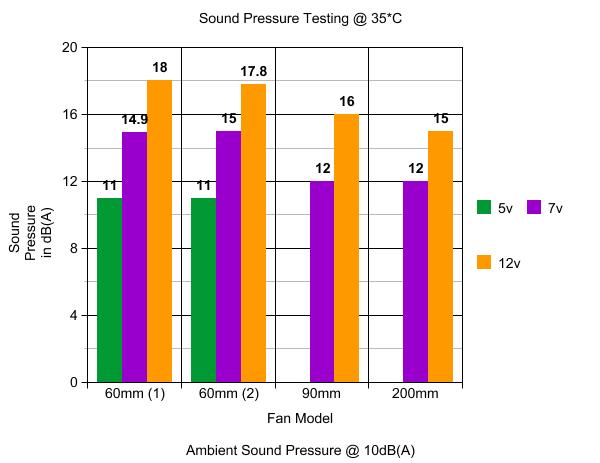Thermaltake eSports Armor A30 mATX LAN Case Review
Testing the Included Fans

Today we’ll be testing 3 Aspects of the included fans:
- Sound Pressure Level (recorded in dBA)
- Airflow (recorded in CFM)
- Heat Tolerance (testing done at 30*C)
The Testing Equipment that I will be using was purchased by myself. It includes:
- General Tools DCFM8906 Digital Air Flow Meter
- Tenma Digital Sound Level Meter
- Kintrex IRT0421 Non-Contact Infrared Thermometer
- Universal Enterprises DM383B Digital Multimeter
For the testing, I will be using one fan at a time, then I will
test both fans together. I will be using my Tenma sound meter sitting
inside the case then convert the measurement to a 1 meter distance. For
the 200mm fan I will use a duct to help measure airflow as my normal
setup is designed for 80, 92, 120, & 140mm fans.
Temperature used
for testing is an artificially created one, designed to simulate a
system at load, which would increase the internal case temp beyond that
of the ambient room temp.
Adapters are used to accommodate the 60mm and 230mm fans today.
I’d like most readers to keep in mind that 3dB(A) is an apparent doubling of the sound pressure, while a 10dB(A) increase is an actual doubling of the sound pressure.
These two distinctions can lead to some confusion for readers.
Thermaltake was nice enough to include the specs on the fans included with the Armor A30:
Thermaltake Fan Specifications
| Specs | Model | Speed | Airflow | Noise | Bearing Type |
| 60mm | TT-6025 | 1500 | 18dB(A) | Ball Bearing | |
| 60mm | TT-6025 | 1500 | 18dB(A) | Ball Bearing | |
| 90mm | TT-9295 | 1200 | 16dB(A) | Ball & Sleeve Bearing | |
| 230mm | TT-2020 | 800 | 15dB(A) | Sleeve Bearing |
Sadly, no airflow was listed in the specifications but it looks like Thermaltake did want to keep this case quiet with it topping out at 18dB(A), according to them.

Well, to say the airflow testing was a disappointment is an understatement. The 200mm is sucking an impressive amount of air out of the case, but the other fans give it very little airflow. This case is definitely one that utilizes a negative air pressure design, but for a gaming case, especially one designed for major LANs, I think Thermaltake could have done better.

Well, at least this case did live up to its rated sound pressure levels. The lack of airflow is expected when small fans like the 60mm twins and the front 90mm are designed to be quiet.
While for my setup, this makes a great HTPC as my included PSU (the Zalman ZM450-US 400w) is also at the quiet level of 16dB(A). However, this level of silence is not really what gamers are looking for.
I guess with this we’ll move up to the conclusion and wrap this review up.

Comments are closed.